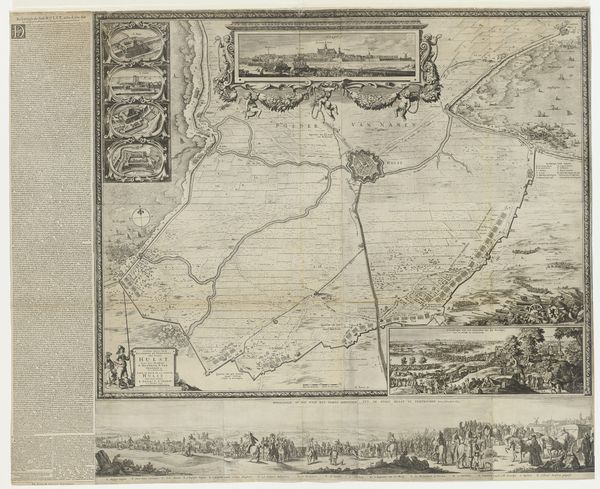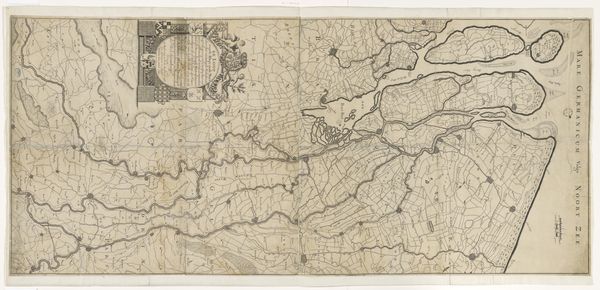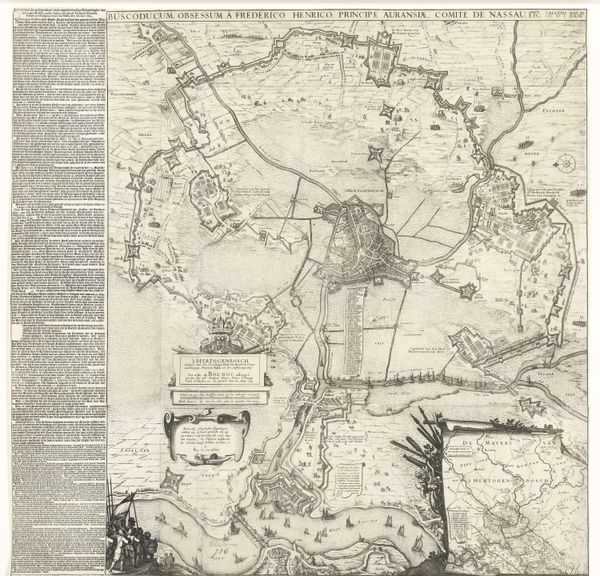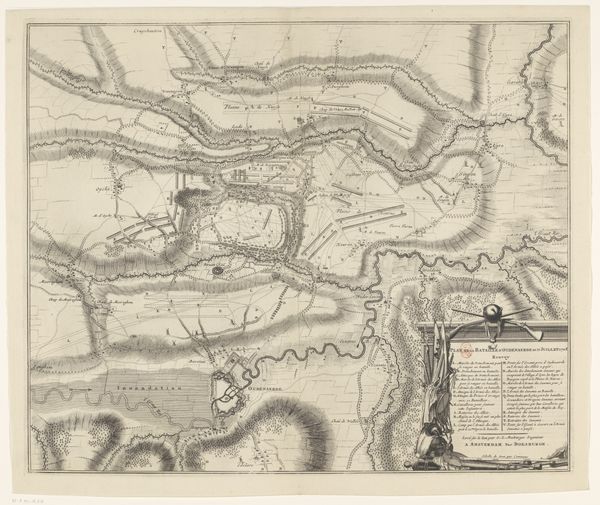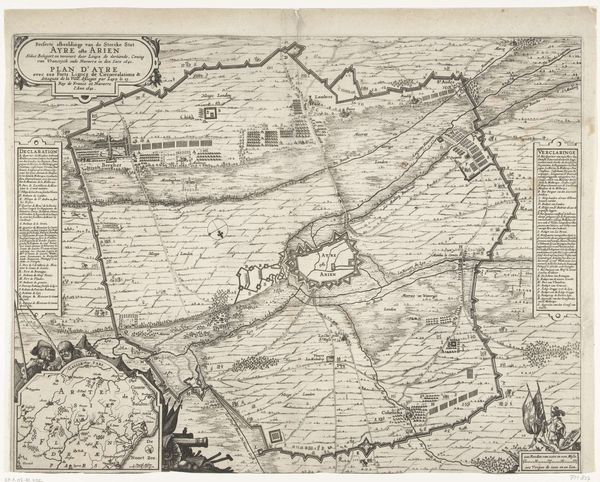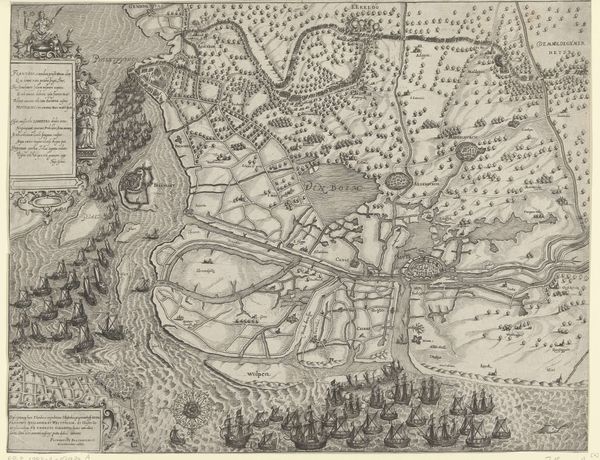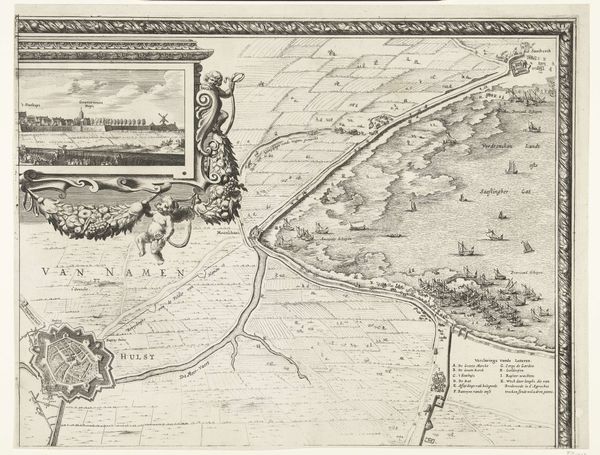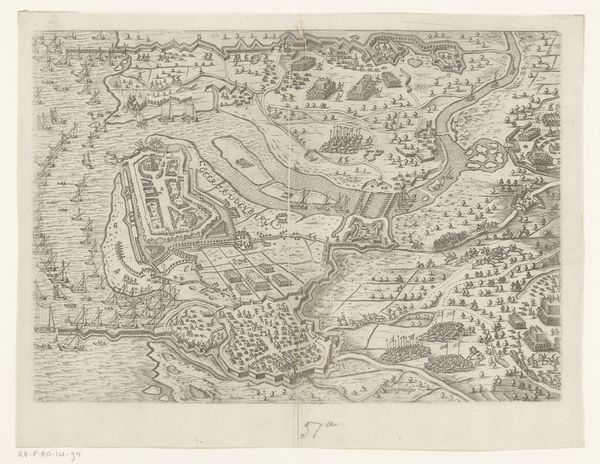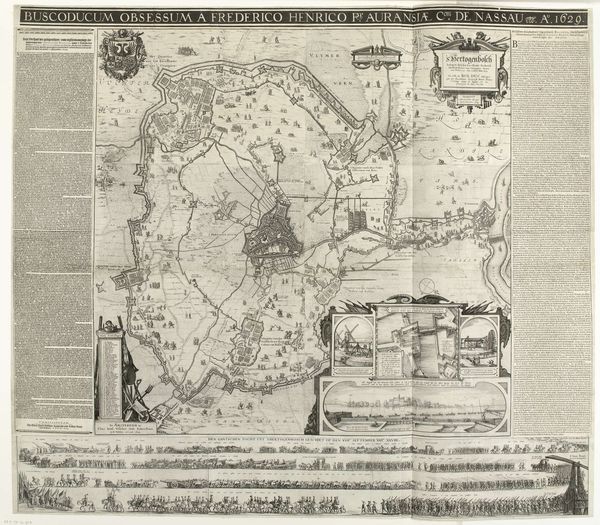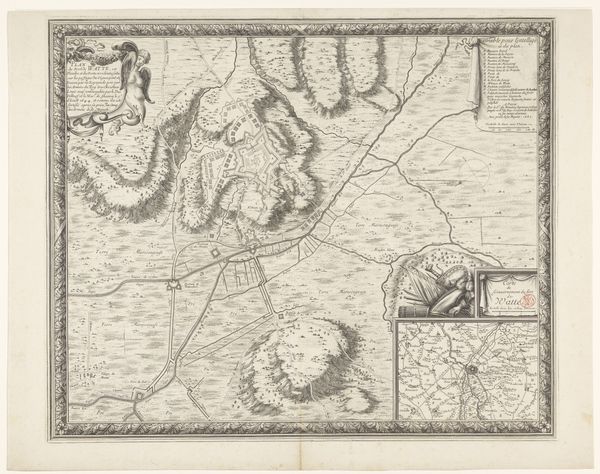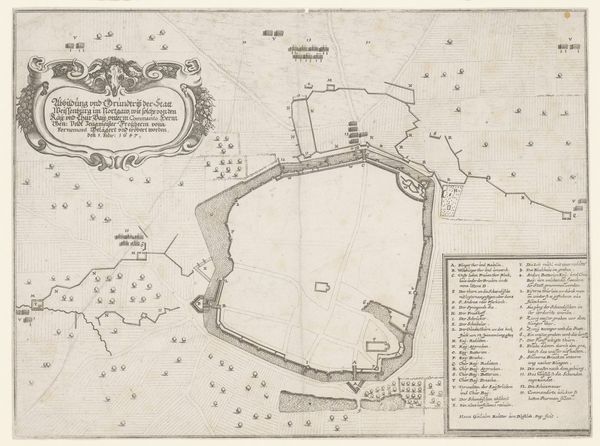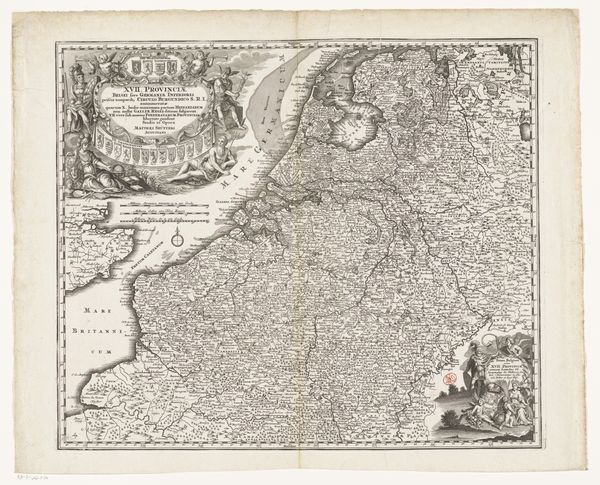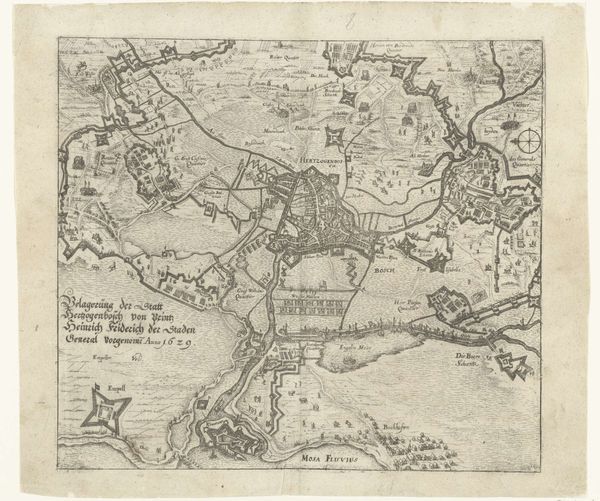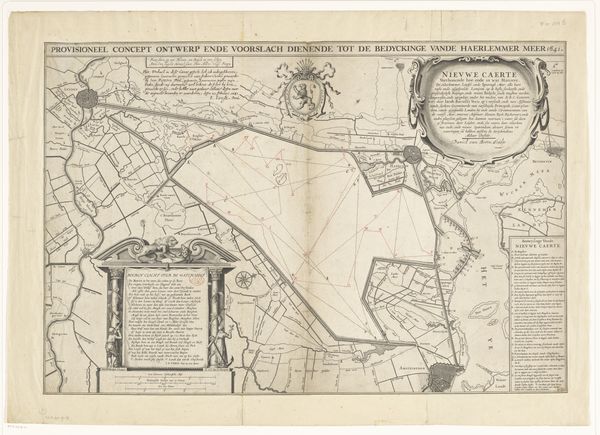
print, etching
#
dutch-golden-age
# print
#
etching
#
landscape
#
etching
Dimensions: height 1118 mm, width 1368 mm
Copyright: Rijks Museum: Open Domain
Curator: Let's take a closer look at this piece, shall we? It’s a map, “Grote kaart van het beleg van Maastricht, 1632," or "Large map of the siege of Maastricht, 1632" made by Salomon Savery. It gives us an overview of the siege during that year. Editor: Whoa, that's... intense. I mean, even without knowing the backstory, you get this sense of calculated tension. Look at the way the landscape is rendered. It is very orderly. It feels like the calm before some really big storm, doesn't it? Curator: Indeed. The style is emblematic of the Dutch Golden Age, known for its detailed landscapes. But what I find fascinating is how this print – etched, mind you – served as a form of political propaganda, detailing military strategy for a specific audience and demonstrating Dutch prowess. The printing press during that time facilitated wide circulation, shaping public opinion about warfare. Editor: Propaganda, huh? That adds a layer. Suddenly, that order I was seeing feels a bit… sinister. It’s like, we’re not just seeing the siege; we're seeing how the victors wanted us to see it. You know, these little houses look peaceful on the river, it is pretty as anything and one forgets what this river probably meant for those under siege! Curator: Precisely! The details offer multiple levels of interpretation. The landscapes were a source of pride for the Dutch but, equally important is this documentation’s historical significance. The siege of Maastricht was one in a string of battles with strong significance for this region in modern times. Editor: History, strategy, and the politics of the press all rolled into one neatly etched package! It makes you think about what's not shown here as much as what is. Maps like this also leave room to dream; and that one of this siege shows that, at least to the artist's imagination, beauty can even grow at places like war. Curator: Agreed. Its purpose may have been overtly political but understanding the broader context—the Golden Age, the politics of warfare—helps appreciate its enduring impact. Editor: For me, it is a beautiful paradox; this calculated scene that still manages to pulse with a sort of hidden wildness. Something to meditate on as we stroll along, eh?
Comments
No comments
Be the first to comment and join the conversation on the ultimate creative platform.
